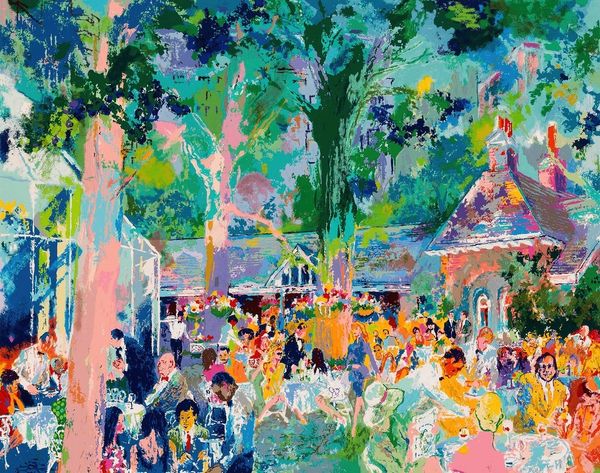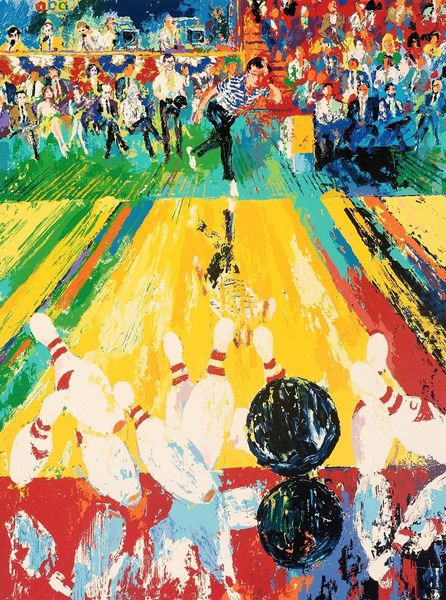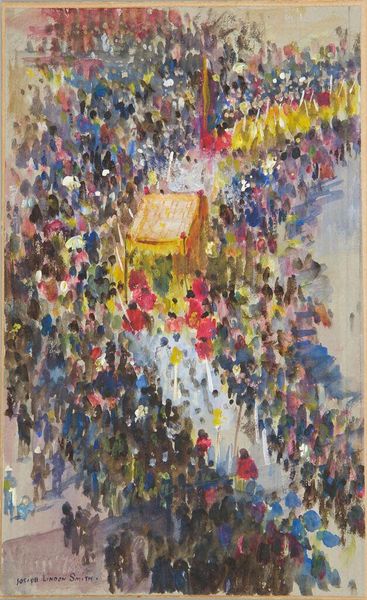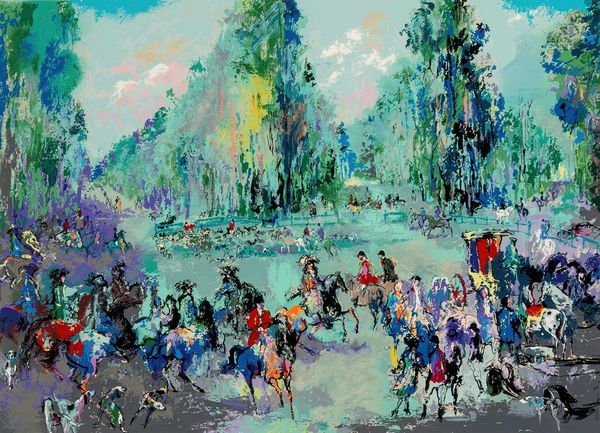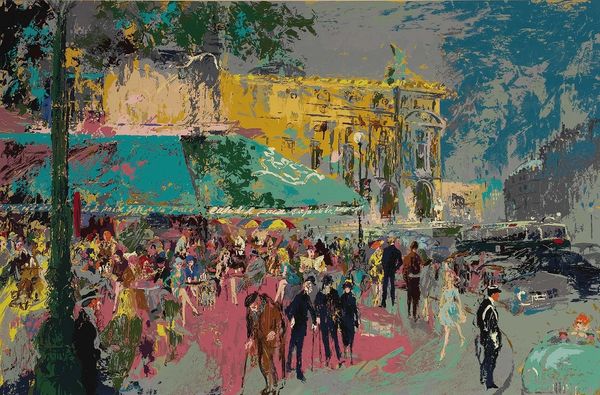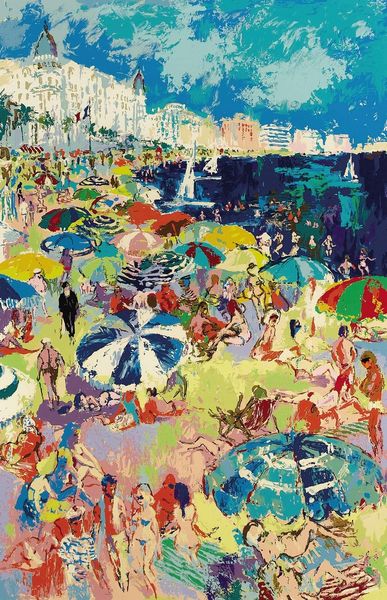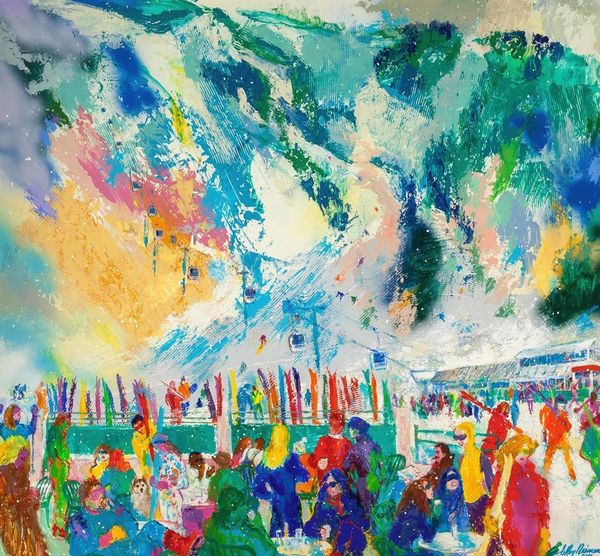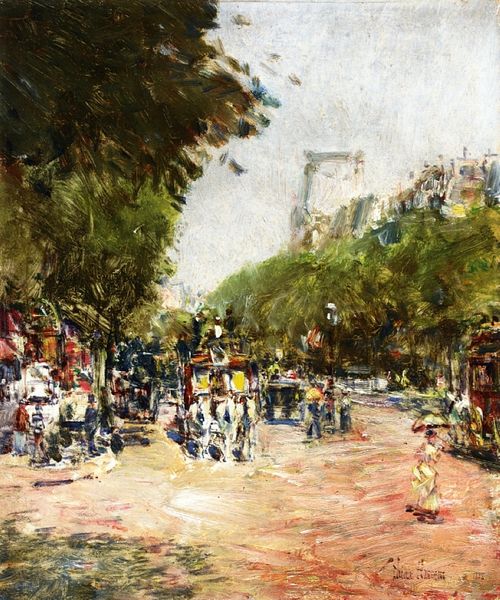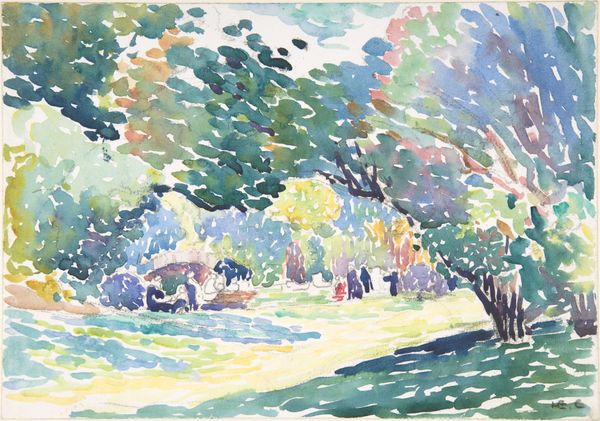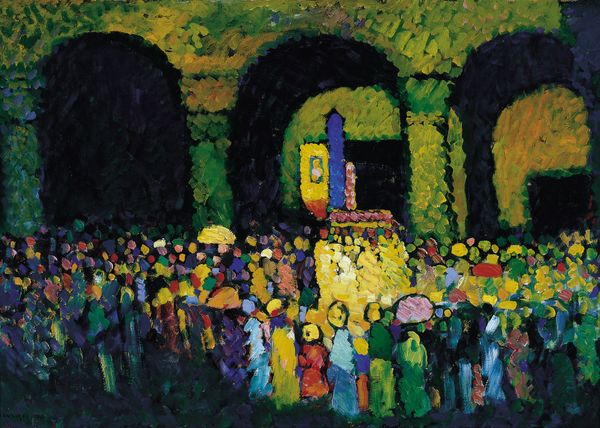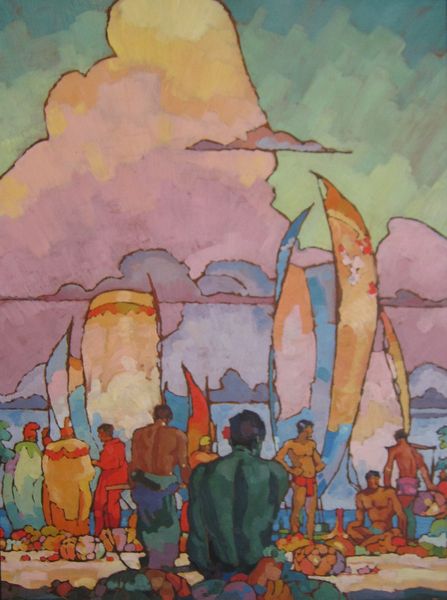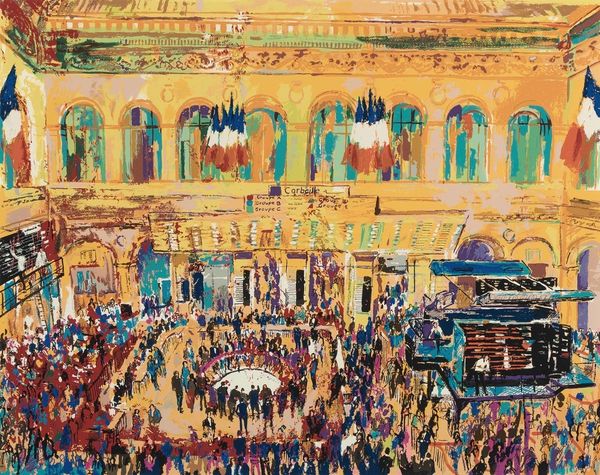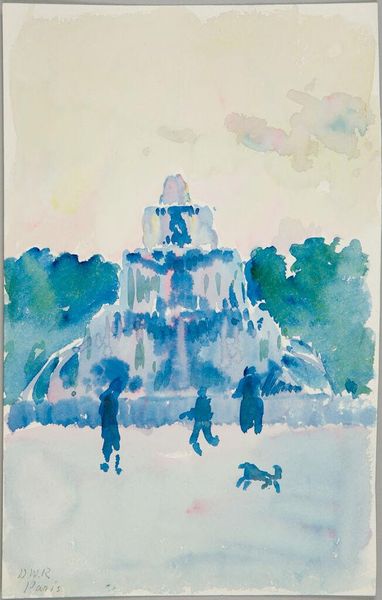
painting, acrylic-paint
#
abstract expressionism
#
contemporary
#
fauvism
#
painting
#
landscape
#
acrylic-paint
#
figuration
#
expressionism
#
cityscape
Copyright: Modern Artists: Artvee
Curator: LeRoy Neiman's "Bastille Day," painted on the 14th of July, presents us with an acrylic-on-canvas depiction of the famous Parisian celebration. It’s really quite festive. Editor: It explodes with a kind of raw, exuberant energy, doesn’t it? The thick application of paint really gives a sense of immediacy, almost like we're standing there among the revelers. You can practically feel the heat and excitement of the day. Curator: Absolutely. Neiman was known for capturing the vibrancy of social events. What intrigues me most is how this image speaks to themes of national identity, tradition, and power through the lens of a single celebratory day. Look how the painting's perspective draws us to the Arc de Triomphe, a symbol laden with history and patriarchy. Editor: The facture, though, is fascinating. I’m drawn to how he layers acrylics to create a textured surface, mimicking the crowded atmosphere of a public spectacle. You see the layering and mixing on the parade participants and the blurred figures. Do you think his technique reflects mass production in any way, as a kind of echo to that period of social expansion? Curator: Potentially. This representation also points to questions surrounding who participates in the collective identity formation around events like Bastille Day. How inclusive is this "national celebration" given various intersectional dynamics such as class, gender and ethnicity? Editor: That makes me consider his method; the brushstrokes feel quick, almost impulsive, but the overall effect is controlled. Did he use premixed colours from commercial producers, perhaps? Was the act of painting such a vibrant moment accessible to many? Or only some? I imagine the texture of the paint lends itself to rapid completion of the image, to then produce another, and another… Curator: Those are incisive points. I’m struck too by the fact that we might see this scene as a post-colonial iteration, a reflection on evolving civic discourse and its role in upholding a potentially exclusionary history of French identity, right? What does that history produce? How do these images become implicated? Editor: Well, looking at these material qualities opens discussions beyond merely subject or surface appearance. This act, the painting and the painter are also social events, producing materials that generate impact! Curator: It encourages us to think deeply about art as both an active and reactive participant in broader cultural and political discussions. Editor: I'm now thinking so differently about it, because, as you pointed out, production and identity in this painting go hand in hand. Thank you for the expanded reading of the history!
Comments
No comments
Be the first to comment and join the conversation on the ultimate creative platform.
